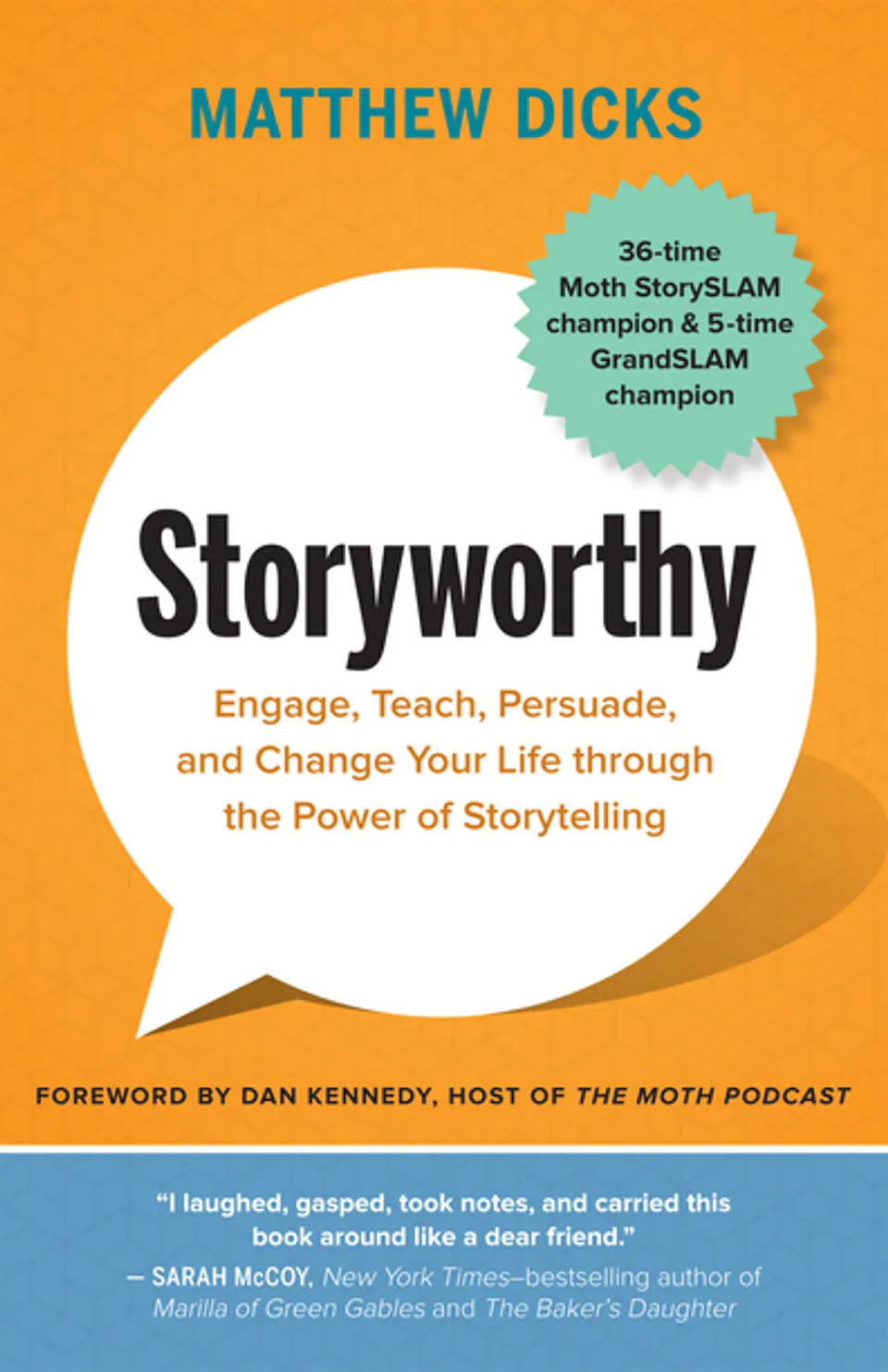Storyworthy
by Matthew Dicks
Added:
Oct 12, 2025
Book Description
A five-time Moth GrandSLAM winner and bestselling novelist shows how to tell a great story—and why doing so matters.
Whether we realize it or not, we are always telling stories. On a first date or job interview, at a sales presentation or therapy appointment, with family or friends, we are constantly narrating events and interpreting emotions and actions. In this compelling book, storyteller extraordinaire Matthew Dicks presents wonderfully straightforward and engaging tips and techniques for constructing, telling, and polishing stories that will hold the attention of your audience (no matter how big or small). He shows that anyone can learn to be an appealing storyteller, that everyone has something “storyworthy” to express, and, perhaps most important, that the act of creating and telling a tale is a powerful way of understanding and enhancing your own life.
Notes & Highlights
Chapter 2: What is a story?
Your story must reflect change over time. A story cannot simply be a series of remarkable events. You must start out as one version of yourself and end as something new. The change can be infinitesimal. It need not reflect an improvement in yourself or your character, but change must happen.
Chapter 3: Homework for life
I assigned myself Homework for Life. This is what I did: I decided that at the end of every day, I’d reflect upon my day and ask myself one simple question: If I had to tell a story from today — a five-minute story onstage about something that took place over the course of this day - what would it be? As benign and boring and inconsequential as it might seem, what was the most storyworthy moment from my day?
A sentence or two that captured the moment from the day. Just enough for me to remember the moment and recall it clearly on a later date. I also allowed myself to record any meaningful memories that came to mind over the course of the day.
Chapter 4: Dreaming at the end of your pen
The exercise is called Crash & Burn … Essentially Crash & Burn is stream-of-consciousness writing.
Rule #1: You must not get attached to any one idea.
Rule #2: You must not judge any thought or idea that appears in your mind.
Rule #3: You cannot allow the pen to stop moving.
That’s it. Set a timer for ten minutes, follow these three rules, and go.
Chapter 5: First, best, last, worst
It’s called First Last Best Worst. All you need to play is pen and paper. The top row of the page (the x-axis) is labeled with the words “First,” “Last,” “Best,” and “Worst,” along with a column labeled “Prompts.” Along the left side of the page (the y-axis), the prompts are listed. The prompts are the possible triggers for memories. What was your first kiss? What was your last kiss? What was your best kiss? What was your worst kiss? For each of these prompts, you fill in the word or words that indicate the answers to those questions. That’s it.
After completing my chart, I analyze it. Specifically, I ask myself three questions: 1. Do any entries appear more than once (the signal of a likely story)? 2. Could I turn any of these entries into useful anecdotes? 3. Could I turn any of these entries into fully realized stories?
Chapter 7: Every story takes only five seconds to tell
All great stories - regardless of length or depth or tone - tell the story of a five-second moment in a person’s life.
These five-second moments are the moments in your life when something fundamentally changes forever. You fall in love. You fall out of love. You discover something new about yourself or another person. Your opinion on a subject dramatically changes. You find forgiveness. You reach acceptance. You sink into despair. You grudgingly resign. You’re drowned in regret. You make a life-altering decision. Choose a new path. Accomplish something great. Fail spectacularly.
These are the moments that make great stories. They are the moments that we seek when doing our Homework for Life. They are often small and sudden and powerful. These are the best stories. They are the only stories worth telling.
Chapter 8: Finding your beginning
Once you’ve distilled your five-second moment down to its essence, ask yourself: What is the opposite of your five-second moment?
Simply put, the beginning of the story should be the opposite of the end. Find the opposite of your transformation, revelation, or realization, and this is where your story should start. This is what creates an arc in your story. This is how a story shows change over time.
Start with the story, not with a summary of the story. There is no need to describe the tone or tenor at the onset. Just start with story, and whenever possible, open with movement. Forward progress. It’s a simple and effective way of grabbing the listeners’ attention and focusing it somewhere specific. It makes them feel that we’re already off and running.
Chapter 11: Cinema of the mind
A great storyteller creates a movie in the mind of the audience.
In order to achieve this lofty goal, storytellers must do one thing, and happily for you, it’s exceedingly simple: Always provide a physical location for every moment of your story.
That’s the trick. A simple one: Make sure that every moment in your story has a location attached. Every moment should be a scene, and every scene needs a setting. It’s the simplest, most-bang-for-your-buck strategy that I have to offer.
Get a copy
